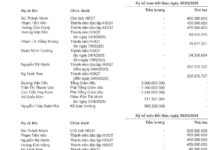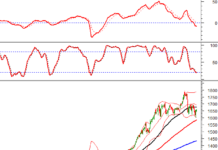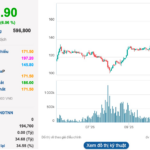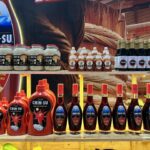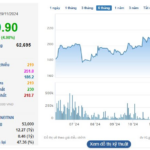
A New Growth Cycle for Vietnam’s FMCG Market
After a relatively subdued 2025 marked by consumer spending cuts, Vietnam’s Fast-Moving Consumer Goods (FMCG) sector is poised for a significant turnaround. Analysts predict that the retail and consumer goods industries will lead the market’s growth cycle in 2026, potentially surpassing the banking sector. Forecasts are optimistic, with projected Compound Annual Growth Rates (CAGR) ranging from 9% (2025-2026, according to VPS) to 12% (2024-2029, TPS Research).
This growth is underpinned by a stable macroeconomic environment, with GDP expected to rebound to 6.5-7% and inflation remaining controlled. The primary drivers of consumption include shifts in social structures, notably the rapid expansion of the middle class. VPS estimates that the middle class will grow from 13% to 26% of the population by 2026, adding 23.2 million people over the next decade (TPS).
As incomes surpass the $5,000 per capita threshold, a trend toward premiumization is expected to gain momentum. NielsenIQ reports that 78% of Vietnamese consumers are willing to pay more for high-quality, health-conscious, and reputable branded products. Simultaneously, the battle for market share will intensify in modern distribution channels. E-commerce, particularly Social Commerce, and Direct-to-Consumer (D2C) models are becoming essential strategies for businesses to gather consumer data and engage directly with customers.
Strategic Pivot and IPO Momentum
As one of Vietnam’s largest FMCG companies, Masan Consumer Holdings (Masan Consumer, UPCoM: MCH) is not immune to the market’s challenges. Instead of waiting, the company has proactively restructured its foundation and sought new growth drivers.
A key growth driver for MCH is its “Go Global” strategy. While leveraging the domestic market of 100 million consumers, MCH is also targeting the global market of 8 billion consumers.
This is evident in the expansion of its flagship brands, CHIN-SU and Nam Ngư, into the world’s most stringent retail systems. Since October 2025, MCH products have been available at Costco (USA and South Korea) and Woolworths (Australia). These retailers enforce some of the strictest food safety, quality management, and supply chain standards, such as FSSC 22000 and BRCGS.
Being selected by these chains not only boosts export revenue but also validates MCH’s production capabilities and compliance with international standards. This global strategy diversifies revenue streams, reducing reliance on a single market. MCH products have also succeeded on international platforms like Amazon (USA) and Coupang (South Korea).
While global expansion provides long-term support, MCH’s short-term growth is driven by its domestic market.
To adapt to market changes, MCH spent much of 2025 reshaping its distribution channels, particularly in traditional retail. The “Direct Distribution” project aims to optimize the system, reduce inventory at intermediary levels, and enhance product visibility at points of sale. Although this may impact short-term revenue, it is expected to create a more efficient foundation for sustainable growth. According to Masan Consumer’s leadership, the new model improves sales efficiency while maintaining costs. By Q3 2025, the average number of active sales points reached 345,000, a 40% increase year-over-year. Sales team productivity rose by 50%, and the average number of products per order also increased by 50%. Notably, distributor inventory was optimized to just 15 days.
With the Lunar New Year approaching—a peak shopping season—MCH’s leadership is confident that completing the nationwide rollout will drive positive revenue growth from Q4 2025.
To capitalize on the premiumization trend, MCH has invested heavily in Research and Development (R&D) to innovate core products (such as fish sauce, chili sauce, and instant noodles) and develop new, high-value convenience categories. This strategy retains existing customers and attracts new ones willing to pay a premium for quality.
These factors have recently propelled MCH’s stock price on the UPCoM exchange. As of November 5, 2025, MCH shares traded at around 190,000 VND, valuing the company at over 201 trillion VND—surpassing other industry leaders and attracting both domestic and foreign investors. Compared to its recent low, MCH’s stock price has surged nearly 70% in just three months, with average daily liquidity of nearly 500,000 units.
| MCH Stock Price Performance Over 3 Months |
The stock’s continuous rise and new highs have led investors to believe the market is “pricing in” expectations of Masan Consumer’s official listing on the Ho Chi Minh City Stock Exchange (HOSE) by year-end.
Additionally, Masan’s leadership shared at the October 29 investor conference that MCH could qualify for the VN30 index after listing on HOSE, further fueling excitement for the IPO. This will be a critical test of the company’s long-term strategy and market valuation for this FMCG powerhouse.
– 11:28 05/11/2025
A Counter-Trending Stock Surges Ahead, Outpacing Vinamilk, Masan, and Major Banks in Market Capitalization
This stock is poised for a HoSE listing, with strong potential to enter key indices following its market transition.
Week of 16-20/12: Masan’s Subsidiary Shareholders Enjoy ‘Dividend Shower’
During the week of December 16-20, 2024, 19 companies will finalise their cash dividend payments. The highest rate, an impressive 95% (equivalent to VND 9,500 per share owned), goes to a subsidiary of the Masan Group.













